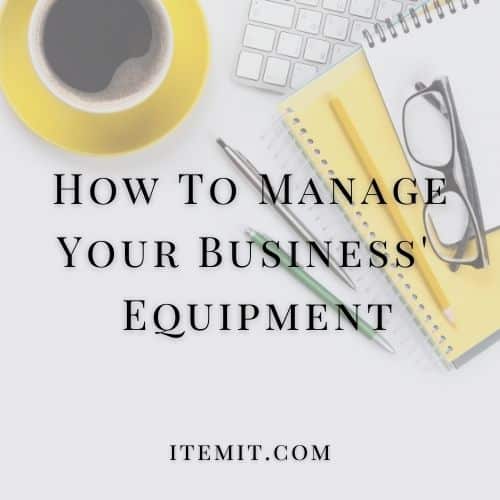To save time and money, it’s essential that you manage your business’ equipment. With an effective equipment management system, you’ll be able to see what you own, where it is, and who’s using it.
It’s crucial to manage your equipment so that your expenses and fixed asset register remain up to date. If you’re currently using spreadsheets to track your assets, you’re missing out on a lot of automation.
This equipment management automation reduces the chance of human error, as every time an asset changes status or location, a spreadsheet will become out of date. Therefore, what’s the best way to manage your business’ equipment?
Using An Equipment Management System
Using an equipment management system will help you keep your asset register readable and transparent. With equipment management software, you’ll be able to see at a glance where assets are and how they’re behaving.
Equipment management software helps you automate a lot of the operations you already need to undertake. So, you’ll already need to track your expenses and your fixed assets so that your company’s finances stay up to date.
![]()
So, the benefit of using software to manage your business’ equipment is that you’ll be able to improve your existing processes, log more data, and review this data much faster, therefore saving you time and money.
How Does Equipment Management Software Work?
Equipment management software works by using digital doubles of your assets. In other words, your IT assets, such as laptops, can be logged as unique, individual assets on your equipment management software.
The benefit of having a unique digital profile for each of your assets is that you can add specific information against these assets. So, for example, if a laptop gets damaged, you’ll be able to report the issue with ease against the damaged laptop. Then, your maintenance team will be able to see exactly which assets are damaged and where they are.
Using asset tags speeds up all of these operations, too. With asset tags, you’ll be able to link your physical assets with their digital doubles. This way, every time you scan an asset’s tag, the digital asset profile will be retrieved.
Then, you’ll be able to log any data or changes that you need to against the asset. Every time an asset’s tag is scanned, the last seen location is updated too, giving you a neat audit trail showing you where your assets have been.
The Benefit Of Asset Tracking And Management
Overall, tracking and managing your assets gives you a wide range of benefits. First of all, you get a full, complete, and up to date fixed asset register, which updates every time you change an asset’s data. This helps you with your finances and with verifying what you own and what’s in use.
Asset tracking and management also save you a lot of time. In terms of admin, you’ll minimise the amount of time you spend updating asset registers and asset records. In terms of updating the assets themselves, all it takes is a scan in your asset tracking app, and you’ll be able to update any data that you need to.
The money you save is in fewer lost assets, more accountability, and the ability to track depreciation against specific assets. With all of this data, it’s much easier to see which assets are running smoothly and which need to be replaced, for example.
To find out more about how itemit’s equipment management system can help you keep track of everything, you can book a demo using the button below:
You can also contact us at team@itemit.com. Why not start your 14-day free trial by filling in the form below?
Or, you can check out these blogs:
Using Tool Tracking Software For Small Businesses
Managing Props And Costumes With Asset Tags
How To Use Fixed Asset Management Software When Working From Home
Try Our Asset Management Software Now!
Start your free 14-day trial now
Instant access. No credit card details required.


